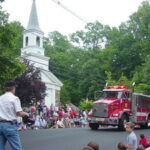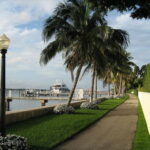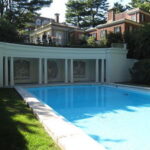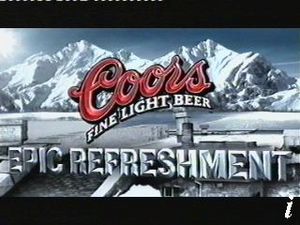I grew up about 60 miles outside of Philadelphia and became a 76ers fan in 1977. Julius Erving, “The Doctor”, was the first superstar player that I saw. Over the years, several great players have worn the 76ers uniform. I was pondering the great individual performances and decided to come up with a list of the best individual season performances by 76ers players over the last 35 years. The list is broken down by position, no player appears on the list under more than one position, although a couple would qualify as such. For the point guard position, I have two categories, pure point guard and offensive minded point guard. For sixth man, I have a an overall (which includes defense) and scorer off the bench sixth man. Enjoy the list and varying opinions are welcome.
Maurice Cheeks – Point guard (pure point guard), 1986
Maurice Cheeks entered the NBA out of West Texas State in 1978. He was the starting point guard for the 76ers through 1989 and helped lead the team to the NBA Championship in 1983. His finest season statistically came in 1986 when he played 40 minutes per game, shot 53.7 percent from the floor, 84.2 percent from the free throw line, scored 15.4 points per game, 9.2 assists per game, and 2.6 steals per game. Cheeks also played for San Antonio, New York, Atlanta and Jersey before retiring in 1993. He retired as the NBA all-time leader in steals.
Allen Iverson – Point guard (offense), 2005 and 2006
Allen Iverson was the 76ers first round draft pick out of Georgetown in 1996. He came into the league as flashy, talented, confident, even arrogant perhaps. More often than not, Iverson backed it up with strong performances on the court. He could be on this list under shooting guard position as well. His finest season as a shooting guard was in 2001 when the 76ers won the Eastern Conference and lost in the NBA Finals to the Los Angeles Lakers.
As a point guard, his best seasons came in 2005 and 2006. Both seasons were phenomenal, so picking one is a toss up. In 2005, Iverson averaged 30.7 points, 4 rebounds, 7.9 assists per game, and 2.4 steals per game. In 2006, he averaged 33.0 points per game, 3.2 rebounds, 7.4 assists, and 1.9 steals. His shooting percentage from the floor was slightly better in 2006.
Ironically, 2006 was Iverson’s final full season with the 76ers. He was traded to Denver in 2007 after playing in just 15 games with the 76ers. He played in 25 games for the 76ers again in 2010 and has not played in the league since that year.
Hersey Hawkins – Shooting guard, 1991
Hersey Hawkins may have been one of the greatest collegiate offensive players in history. He
came out of Bradley in 1988 and was immediately a starter. He averaged a respectable 15 points per game his rookie year but often seemed hesitant on the offensive end, where he thrived in college.
Hawkins became the offensive force the 76ers expected in 1991, his best year as a professional. For the season, Hawkins shot 47.2 percent from the floor, 40 percent on three point shots, 87.1 percent from the foul line, and averaged a little over 22 points per game. Hersey Hawkins also proved he was a well rounded player and averaged 3.9 rebounds and 3.7 assists per game.
His final season in Philadelphia was 1993 and played for Seattle as a starter through the 1998 season. Hawkins finished his career coming off the bench his last season in Seattle, and a season in Chicago and Charlotte. Hawkins finished his career with a scoring average of 14.7 points per game.
Andrew Toney – Shooting guard, 1984
Andrew Toney came out of Southwest Louisiana in 1980. He might have been the best pure shooter I have ever seen in a 76ers uniform. Ask any Boston Celtics fan how good Andrew Toney was, as he became known as “The Boston Strangler” for his performances against the Celtics. He had some great seasons before foot injuries began to take their toll beginning in the 1985-1986 season.
Toney had a phenomenal season in the 76ers’ championship season of 1983. But his best statistical season came in 1984 when he shot an amazing 52.7 percent. That percentage is quite high for a player who primarily shot from the outside. He made 83.9 of his free throws, averaged 4.8 assists per game, and averaged 20 points per game.
Andrew Toney ended his career following the 1988 season with a career scoring average of 15.9 points per game on 50 percent shooting.
Julius Erving – Small Forward, 1980
Julius Erving was the major star of the American Basketball Association prior to joining the 76ers in 1976. He was a main attraction in the NBA as well and “Dr J” enjoyed his best season in the NBA in 1980. For the season he shot 51.7 percent from the floor, averaged 26.9 points, 7.4 rebounds, 4.6 assists, 2.2 steals and 1.8 blocked shots per game.
Erving played his entire NBA career with the 76ers. He won a championship in 1983, was an 11 time NBA All-Star, and one of a handful of players to score over 30,000 professional points. Julius Erving is a member of the Hall of Fame and named as one of the top 50 players in NBA history.
Charles Barkley – Power forward, 1988
Charles Barkley came out of Auburn University in 1984. Known as “The Round Mound of Rebound”, Barkley had tremendous bulk, inside presence and rebounding ability at just 6 feet, 5 inches tall. He learned and matured as a player under veterans Julius Erving and Moses Malone.
Barkley played for the 76ers until 1992 and had many great seasons which would qualify for this list. For me, his best season was 1988 when he made 58.7 percent of his shots and averaged 28.3 points and 11.9 rebounds per game.
Charles Barkley also played for the Phoenix Suns and Houston Rockets before he retired in 2000. He was elected to the Hall of Fame in 2006.
Moses Malone – Center, 1983
The 76ers had a great team in the late 1970s and early 1980s, but failed to win a championship. The missing piece was a dominating center, which they got in 1982 when Moses Malone came to the team from the Houston Rockets.
Malone dominated the 1982-1983 season and was his best season as a 76er. For the year he averaged 24.5 points, 15.3 rebounds and 2 blocked shots per game. Malone had four successful seasons in Philadelphia before being traded to the Washington Bullets.
Moses Malone retired following the 1994-1995 season. He is a member of the Hall of Fame and one of the top 50 players in NBA history.
Bobby Jones – Forward (Overall sixth man), 1981
Bobby Jones began his 76ers’ career in 1978 and was always known as one of the best defensive players in the NBA. His best overall season for the 76ers was 1981. As a sixth man, he averaged 25 minutes, 13.5 points, 5.4 rebounds, 2.8 assists and 1.8 steals per game. Jones was also a reliable shooter. He made 53.9 percent of his shots from the floor and 81.3 percent of his shots from the free throw line.
Ron Anderson – Forward (Scorer off the bench sixth man), 1989
Ron Anderson played for the 76ers from 1988 through 1993. He was primarily a sixth man and enjoyed his best season in 1988-1989.
He started 12 games that season, but came off the bench for the other 70 games. He had a terrific outside shot and averaged 16.2 points per game. He made 49 percent of his shots from the floor and nearly 86 percent from the free throw line.
Anderson finished his career in 1994 with the Washington Bullets. For his career, he averaged 10.6 points per game.
I believe this extensive list of players makes up the best individual season performances for the 76ers in the last 35 years.







